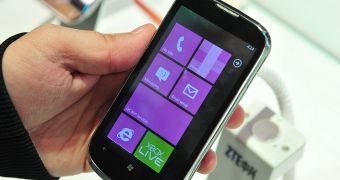Microsoft’s Windows Phone platform powers various appealing devices out there, but, in order for it to be successful, it needs to assault the low-end of the smartphone segment as well.
The Redmond-based software giant has already admitted that, and it has worked closely with its hardware partners for the launch of entry-level, affordable handsets.
One of them, the Nokia Lumia 610, arrived on shelves in the UK today, with an 800MHz application processor inside and only 256MB of RAM.
According to Nokia and Microsoft, the handset can deliver an experience on par with the one available on higher-end device, yet there’s a caveat.
Users can not access all applications available in the Windows Phone Marketplace, as some of them have higher RAM requirements than what the smartphone can support.
Microsoft did foresee this, saying that around 5 percent of the Windows Phone apps would be restricted on 256MB handsets, and has provided details on what devs should do to prevent that.
Info on some of these applications has emerged recently, when users found out that Skype won’t be available for them on Lumia 610, along with other popular apps and games, including Angry Birds.
Overall, the number of apps incompatible with the 256MB of RAM inside Lumia 610 (ZTE Orbit's 512MB of RAM might be a problem here too) is low. Only 1.6 percent (1,387) of the total 86,292 active applications in the Marketplace won’t be visible for these phones.
This doesn’t seem much, but the percentage increases significantly when the most popular apps in the storefront are taken into consideration.
4.64 percent of the 10,000 most popular applications in the UK are incompatible with the low RAM requirement, and the percentage increases to 6.4 when the 1,000 most popular apps are considered, AllAboutWindowsPhone reports.
50 percent of these are games, including said Angry Birds, along with Plants vs. Zombies, The Sims 3, and Earthworm Jim, among others.
At the moment, there’s not much that users can do. If they want an affordable Windows Phone, they’ll simply have to live with this limitation, while hoping that developers would consider optimizing their software to fit their devices as well.

 14 DAY TRIAL //
14 DAY TRIAL //